By Lucky Peak Banders
The Morning News: Songbirds
By: Matthew Danihel
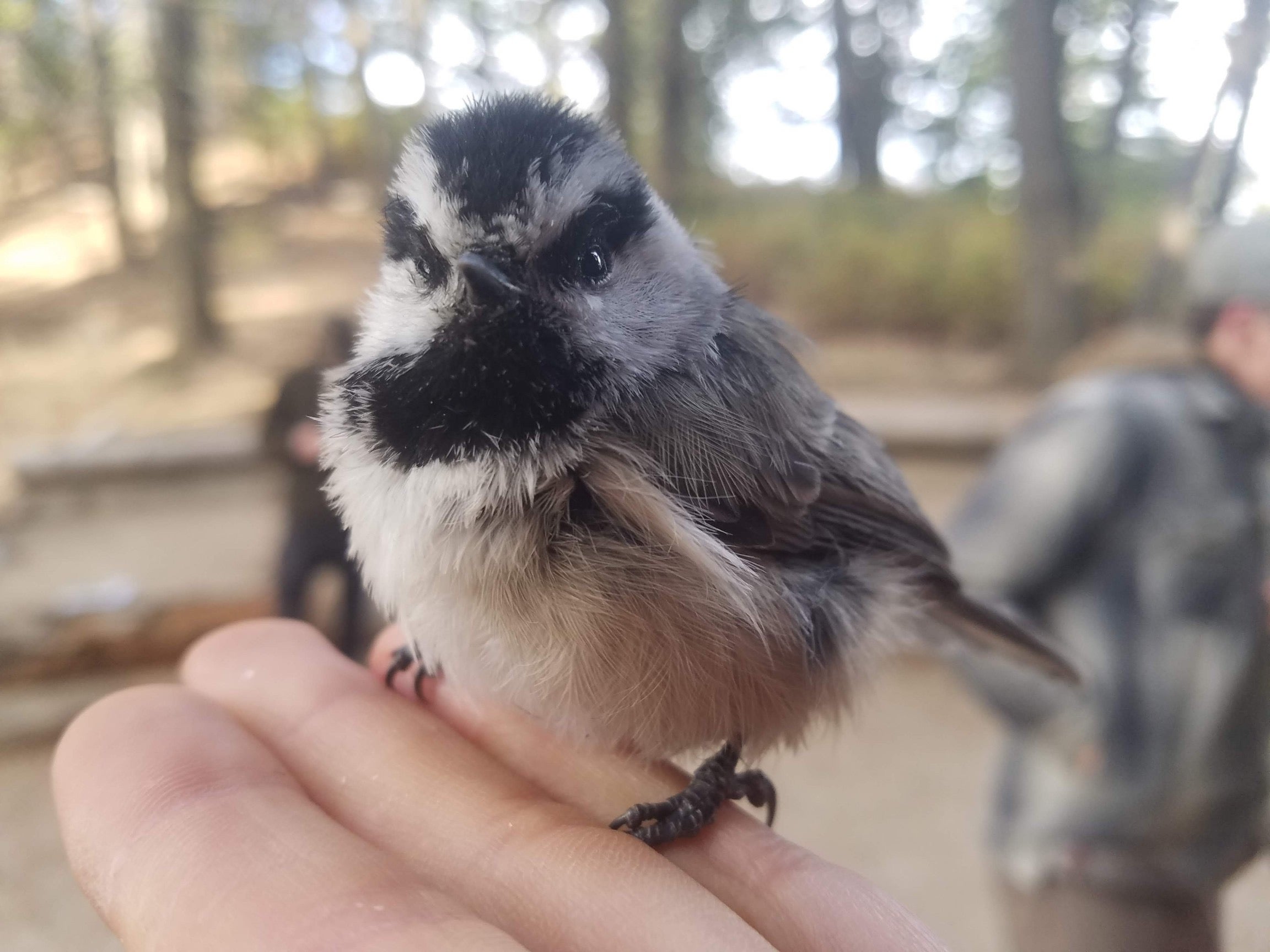
Following a 2018 season that saw many higher-than-normal numbers, including a record-setting 400-capture day and a record 63 species captured, our team had high hopes for an equally prolific 2019 banding season. Unfortunately, this did not pan out, with an anemic start and slow finish resulting in a much lower-than-average season. Although we haven’t dug into the data yet to say for sure, we suspect that the unusual spring weather that impacted our Northern Goshawk project may be to blame for our low songbird numbers as well. We finished with 4,347 new birds banded (well below our average of 5,196) and 549 recaptures for a total of 4,896 total birds processed. However, a Downy Woodpecker banded on October 12th brought our season total to a respectable 60 species banded.
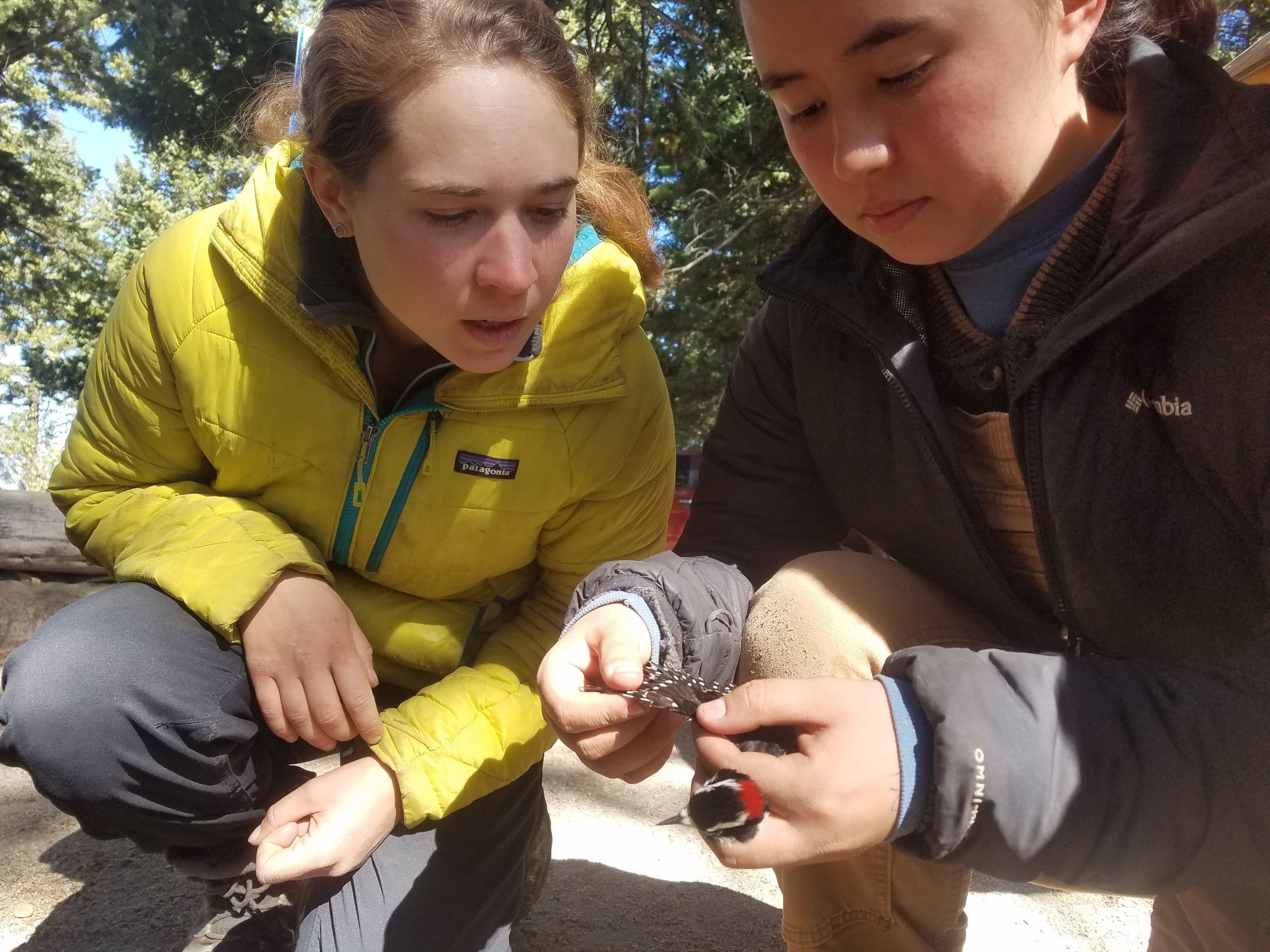
Many species saw lower-than-average totals. Some notables including “Audubon’s” Yellow-rumped Warbler (176 compared to an average of 320), Orange-crowned Warbler (92 compared to an average of 148), Spotted Towhee (114 compared to an average of 201), and Wilson’s Warbler (35 compared to an average of 60).
However, two species in particular stuck out as far below normal.
We caught just 11 Townsend’s Warblers, easily our lowest total in the history of the project (our prior low was 22, set in 2003) and far below our typical average of 61. But even more notable was our total of 581 Ruby-crowned Kinglets. Typically far and away our most common species, this count for the species is the lowest in the history of the project (prior low was 635 in 2009) and just more than half of our typical total of 1,087.
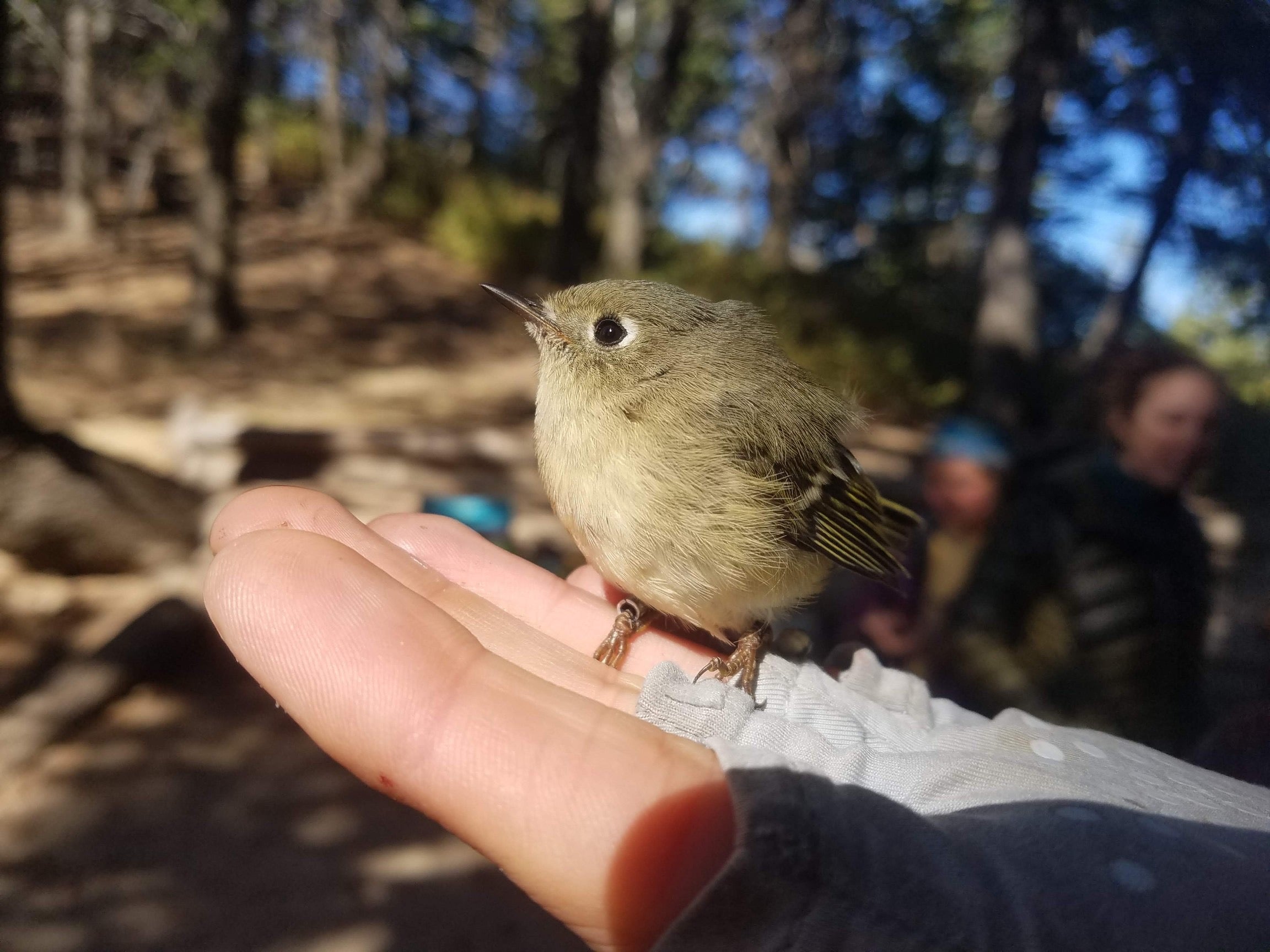
While most species had typical or lower-than-normal counts, there were a few species that saw abnormally high counts. Our total of 42 American Robins captured was our highest total since 2012 and notably higher than our average total of 28, while our total of 93 Townsend’s Solitaires was the second-highest in the history of the project (trailing only the 126 captured in 2000) and far above our average total of 35. But the most notable species in this column is the “Oregon” Dark-eyed Junco. With a whopping 1,019 new juncos banded, the highest total since 2007 and our second-highest total ever, the species boasted far and away our highest total for the year. This is just the second time in the 23-year history of the Lucky Peak project that “Oregon” Junco was our top species captured (the first was in 2009).
Equally notable was a massive irruption of Evening Grosbeaks.
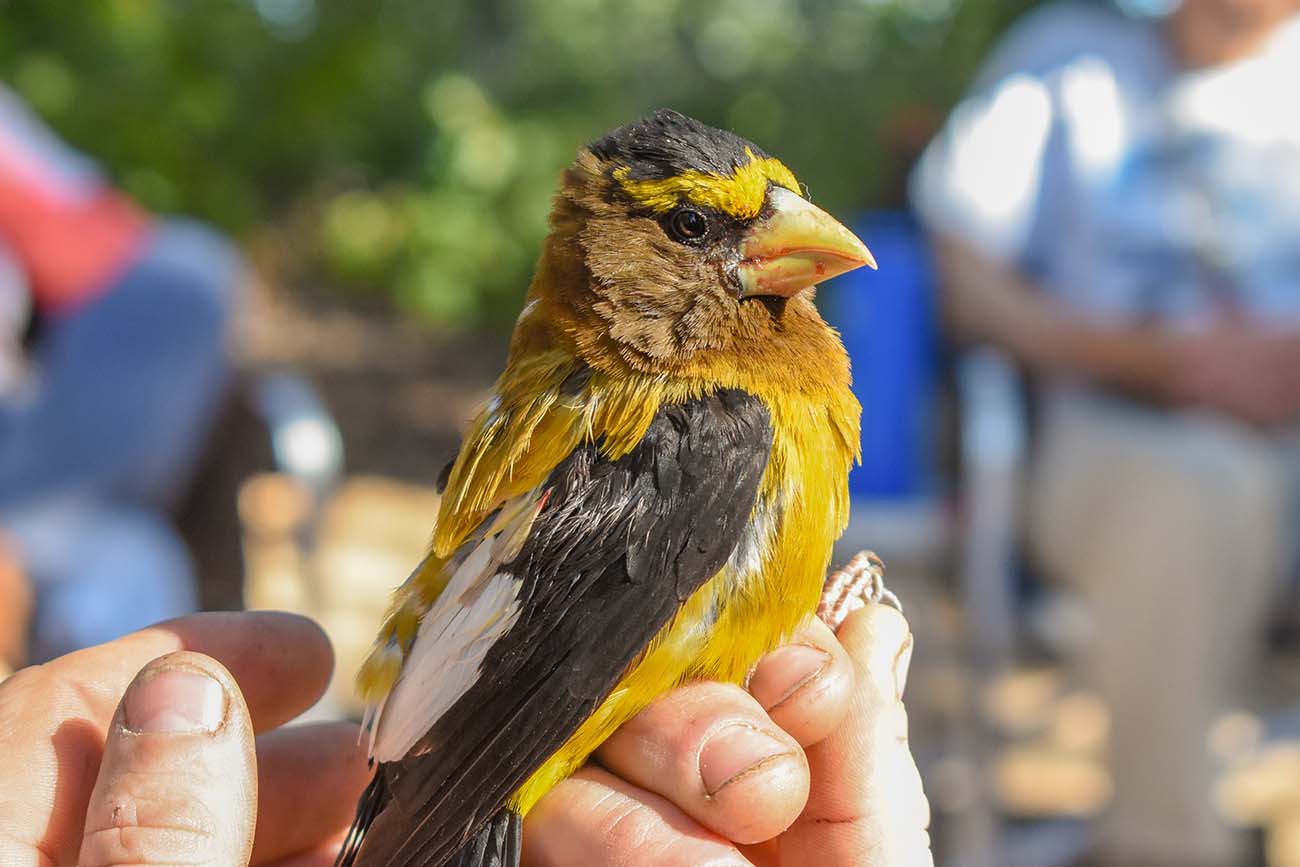
Typically detected on just a handful of days at Lucky Peak and only captured in one prior year in the history of the project (7 birds in the year 2000), the species moved into the Lucky Peak area in force in 2019, with large flocks detected on a majority of days and a whopping 14 birds captured and banded. Our experience at Lucky Peak matched what birders across southwest Idaho were seeing, including many hundreds that were seen in cities like Boise and Mountain Home during the fall. Other rare species captured in smaller numbers included two American Redstarts, a Tennessee Warbler, a Canyon Wren, and a Varied Thrush.
The Afternoon News: Raptors Over Hawkwatch
By: Cole Rankin
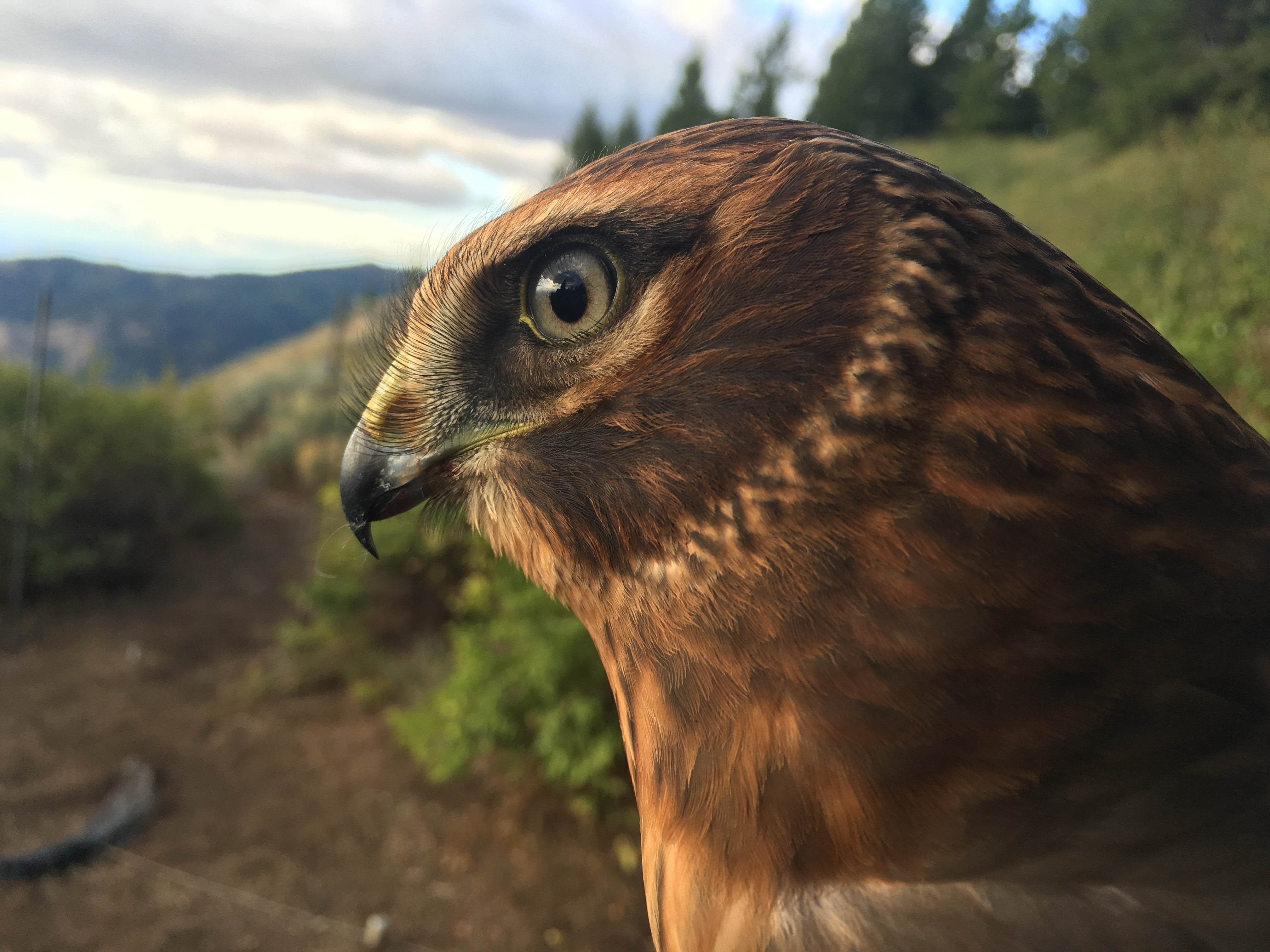
Hawkwatchers kept their eyes to the skies and close tabs on the migratory flow of raptors soaring over Lucky Peak heading off to places as far as South America. Anyone who has spent time at Hawkwatch knows this can be quite a challenge some days on this open peak devoid of shelter from the elements! However, the Hawkwatchers always persevere, not only in collecting valuable migration data, but also educating visitors with up-close opportunities of newly banded raptors.
-
- In response to shifting migration timing, we started hawk counts on August 15th, 10 days earlier than usual.
- We had higher-than-average counts for many of the less-common raptor species such as Bald Eagles, Swainson’s Hawks, Broad-winged Hawks, Peregrine Falcons, and Merlins.
- We had lower-than-average counts for many common species such Sharp-shinned Hawks, Cooper’s Hawks, and American Kestrels.
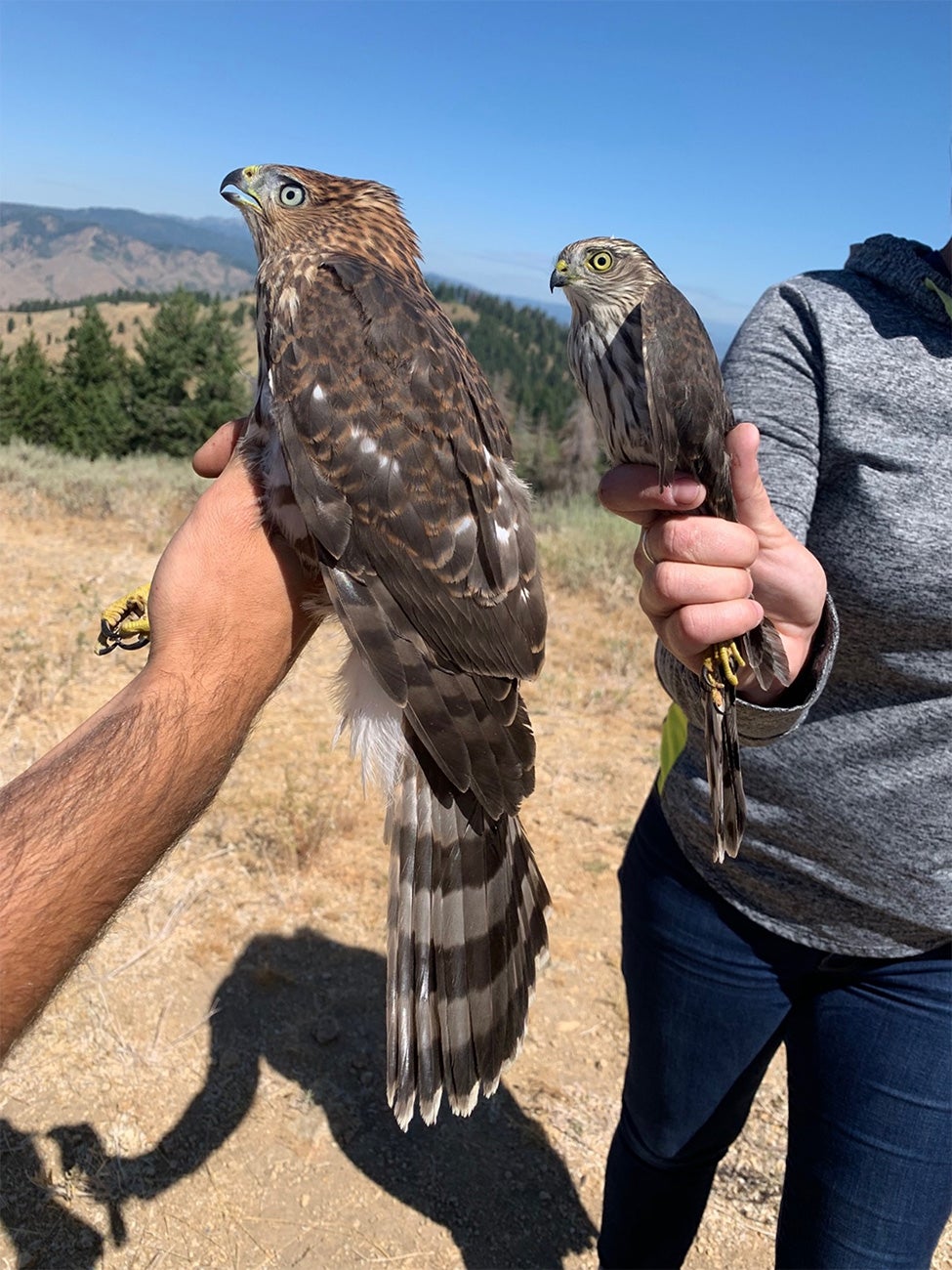
-
- Our highest count for a single day was 569 raptors recorded on September 22. Of these, 402 were Turkey Vultures, and we also counted 22 Broad-winged Hawks on this day!
- Counts of Turkey Vultures continue to increase: the highest single-day count this season for this species was 473.

- Other uncommon birds seen on the Peak while hawk watching included White-headed Woodpecker, Pileated Woodpecker, two Blue Jays (at the same time!), Snow Bunting, and flocks of Gray-crowned Rosy Finches. Additionally, we counted over 8,500 Snow Geese passing on the same day in late October.
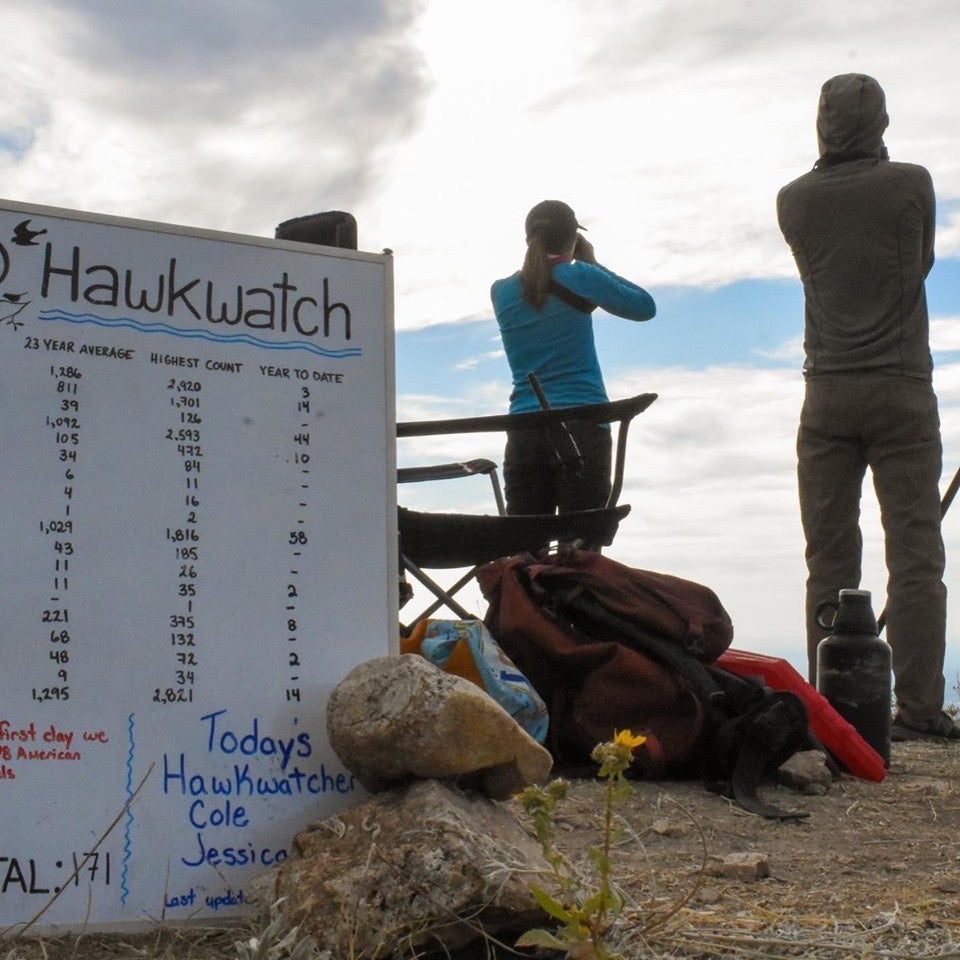
Our 2019 full-time hawkwatchers were Cole Rankin and Jessica Lawrence. If you’re ever wondering how many raptors we’ve counted and what species we’ve seen, come visit us. Daily data entries are compared to previous years for some insight on raptor migration trends in the northwest. Photo by Matthew Danihel
Here is a comparison of our 2019 totals versus our long-term average at the site Use the search field to search and filter this table.
| Species | 2019 Season | 25 Year Average |
|---|---|---|
| Observation Hours | 562.5 | 471 |
| Turkey Vulture | 1,843 | 1,348 |
| Osprey | 72 | 69 |
| Bald Eagle | 36 | 11 |
| Northern Harrier | 245 | 232 |
| Sharp-shinned Hawk | 1,097 | 1,305 |
| Cooper’s Hawk | 696 | 817 |
| Northern Goshawk | 41 | 40 |
| Red-shouldered Hawk | 0 | 0.52 |
| Broad-winged Hawk | 42 | 34 |
| Red-tailed Hawk | 1,086 | 1,119 |
| Rough-legged Hawk | 4 | 6 |
| Swainson’s Hawk | 166 | 109 |
| Ferruginous Hawk | 4 | 4 |
| Golden Eagle | 53 | 50 |
| American Kestrel | 863 | 1,032 |
| Merlin | 59 | 46 |
| Peregrine Falcon | 21 | 11 |
| Prairie Falcon | 13 | 11 |
| Gyrfalcon | 0 | 0.04 |
| TOTAL | 6,843 | 6,557 |
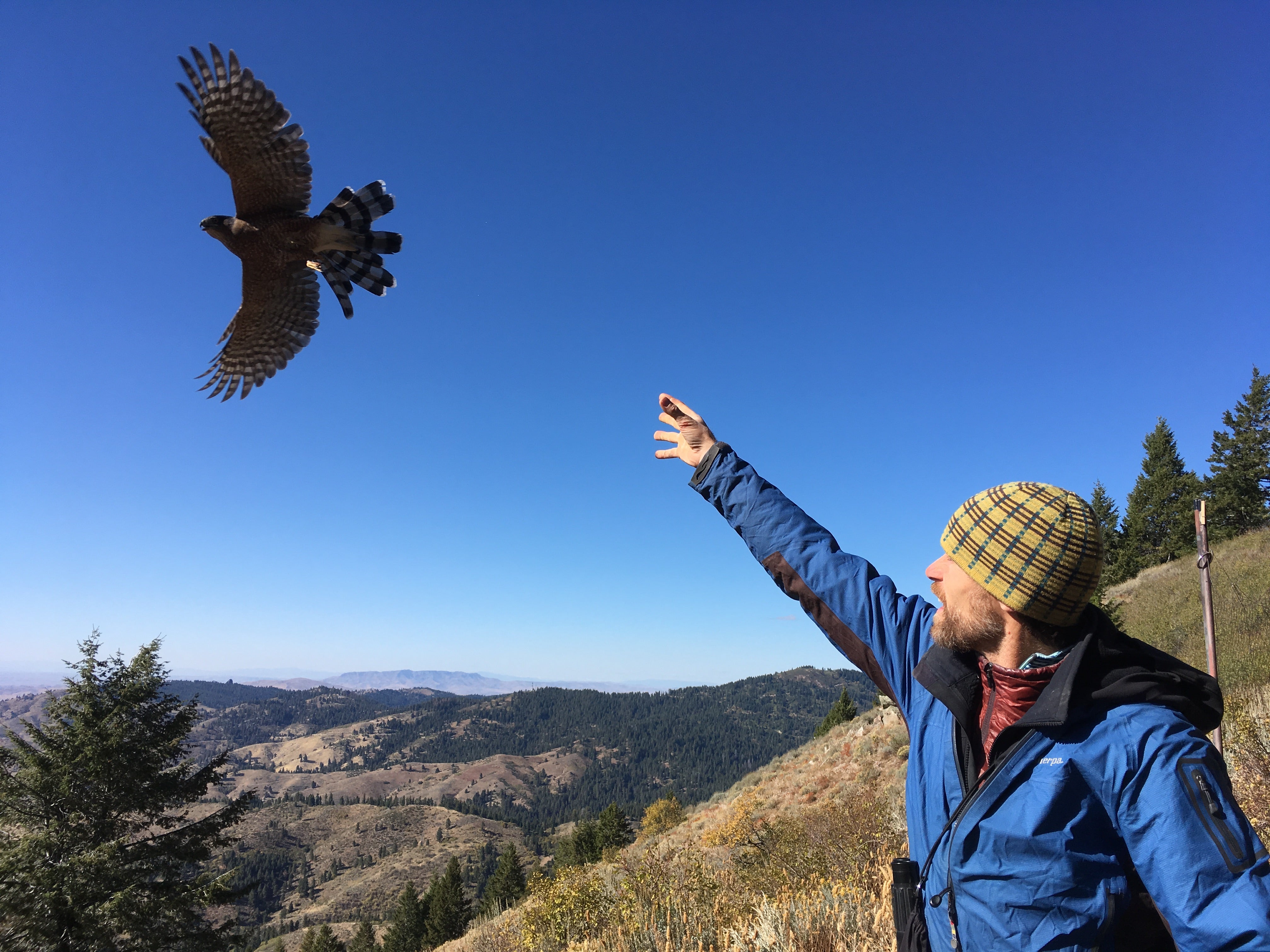
The Evening News: Owls and Bats
By: Leah Rudge
In 2019 we welcomed two new owl banders – Garrett and Aylett – and little did they know they chose a fantastic season to be with IBO. This was the most productive season in several years with 602 total owl captures! We had two nights with over 40 owls captured, and 13 nights with over 20 birds captured. We did not have a 0-bird night (fully open nights) after September 15th, so we were busy in some way every night!
Being busy is great for collecting more data, sharing more one-of-a-kind experiences with our visitors, and keeping our banders awake throughout the night!
A total of 41 Flammulated Owls were banded (5 adults and 36 hatch-years), which is a pretty average year. The latest individual was captured on October 12th . We banded 561 Northern Saw-whet Owls: 417 Hatch-Years (74%), 99 Second-Years (18%), and 44 After Second-Years (8%). We had 293 females (52%), 101 males (18%), and 167 unknowns (30%).
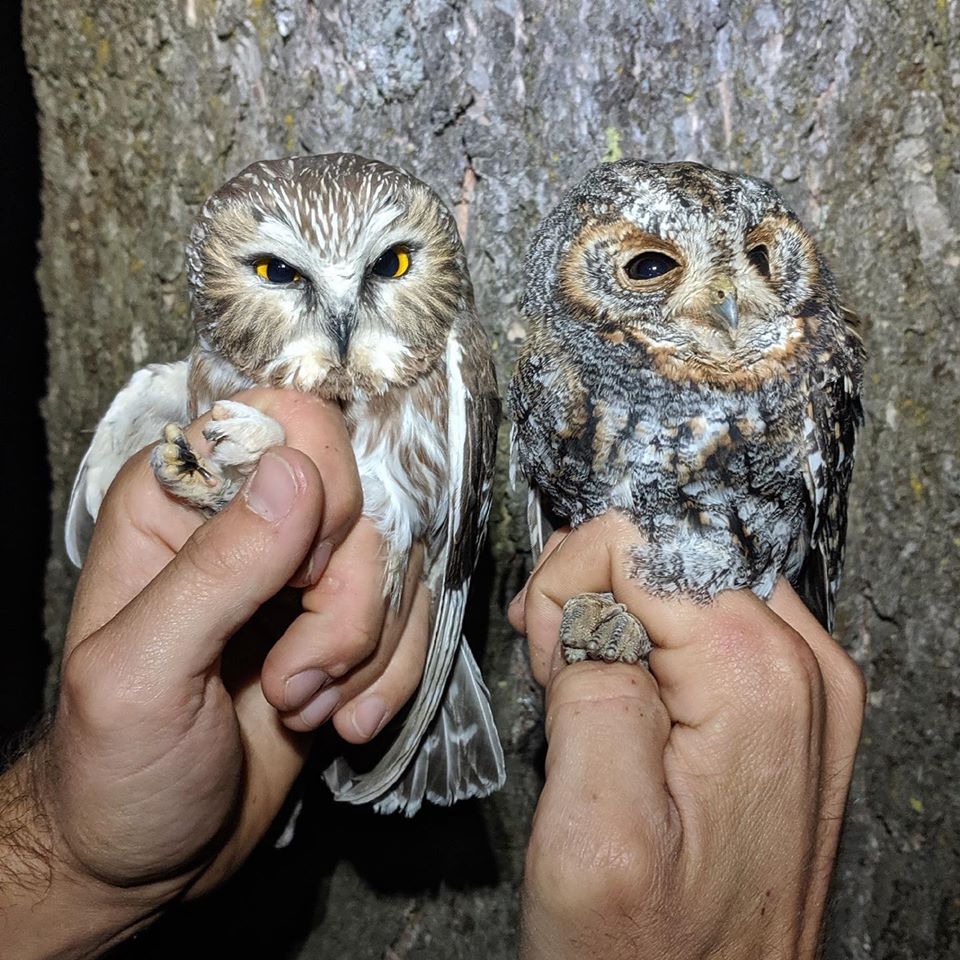
Recaptures are not terribly common, especially when banding owls. This year seemed to be a great year for recaps across all of our projects, even our owl project! We recaptured two Northern Saw-whet owls who were banded here at Lucky Peak in 2018 as hatch-year birds. This means these owls have learned the ropes of adulthood and are on their way through the dangerous journey of migration for a second time. We hope we see them next year!
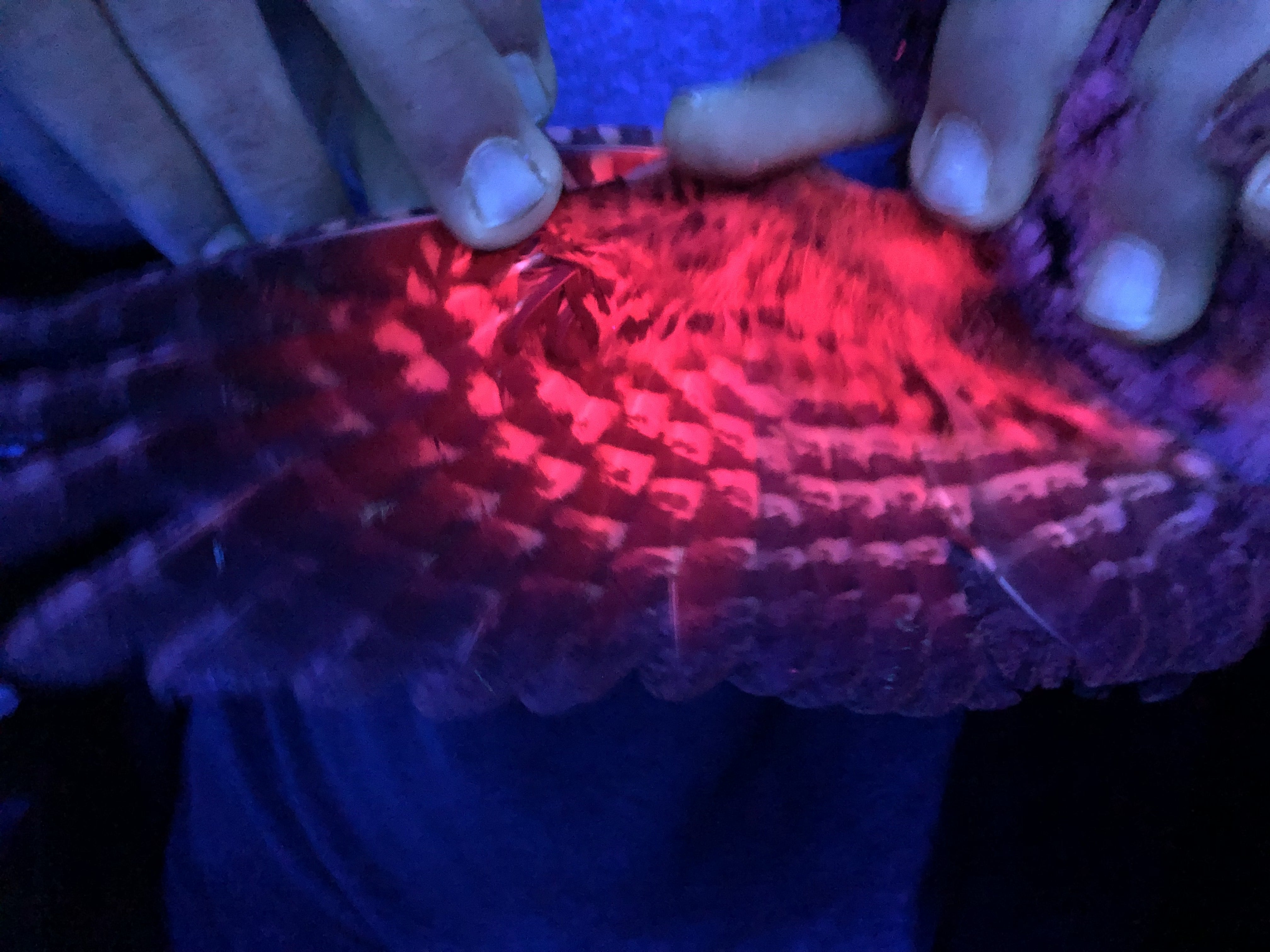
On October 4th , we had another exciting recapture of a foreign band (not banded by the IBO) on a hatch-year Northern Saw-whet owl that was previously banded at the Owl Research Institute in Montana in September of this year. Foreign recaps are very scarce, especially for owls, so this was a big deal (not to mention it was captured 2 nights in a row here)!
Owls were not the only exciting creatures flying through the night!
We caught 20 bats in total that included the Townsend’s Big-Eared Bat, Hoary Bat, Silver-Haired Bat, and Long-Eared Myotis. In collaboration with the Idaho Department of Fish and Game, we also recorded any bats we caught incidentally to contribute to state-wide monitoring for White-nose syndrome, which has not yet reached Idaho. To learn more about this fungal disease, head to this Idaho Department of Fish and Game article.
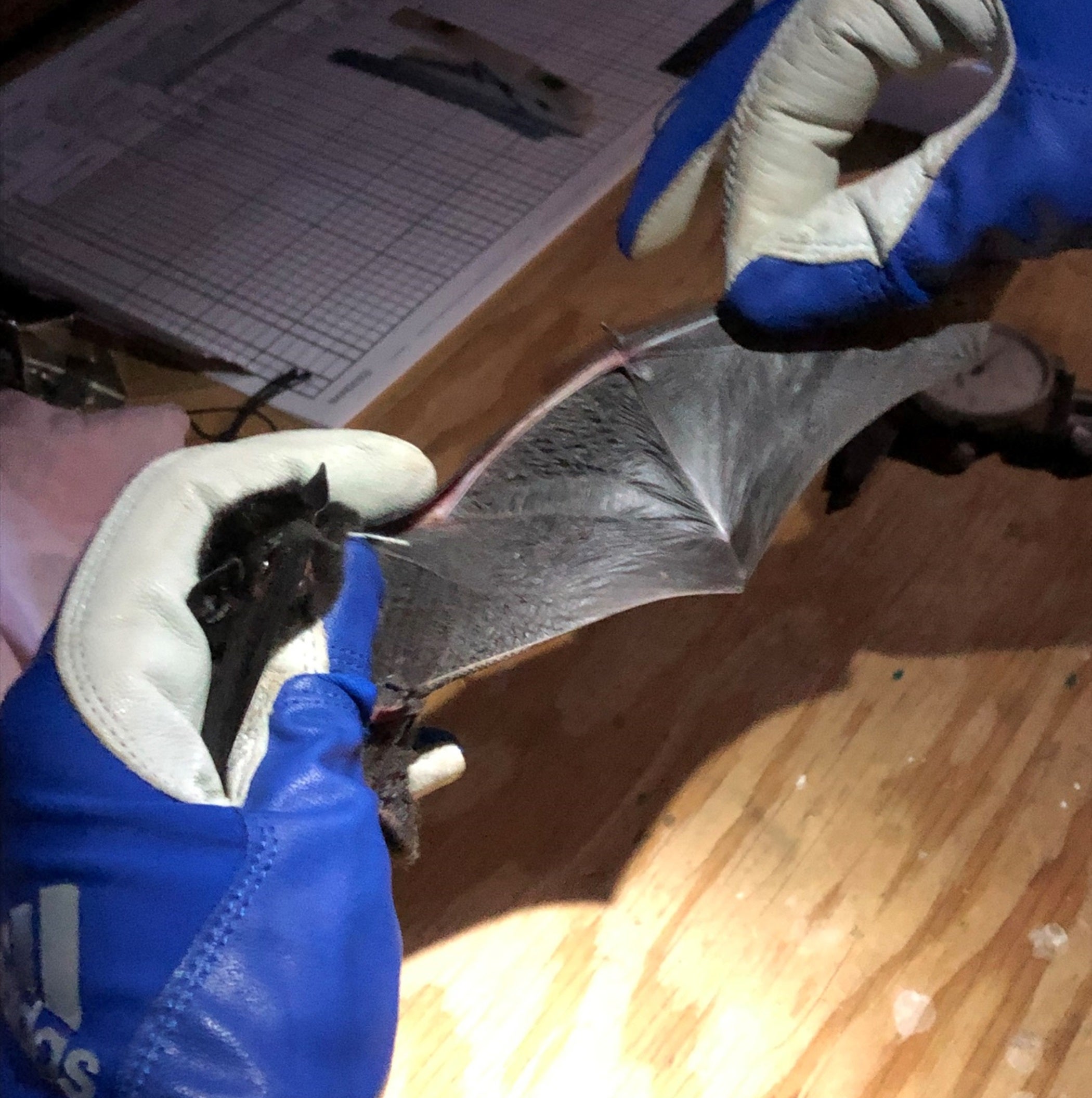
This article is part of our 2019 end of the year newsletter! View the full newsletter here, or click “older posts” below to read the next article.